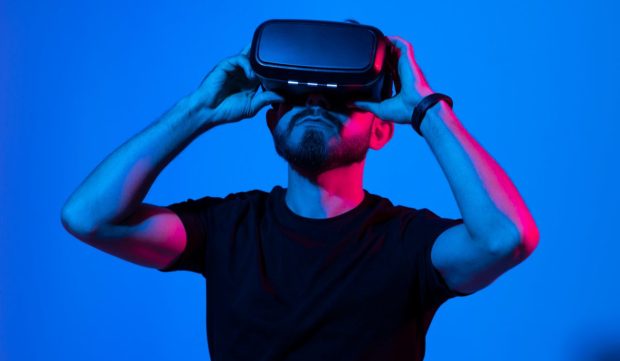Convenience Stores Lose Their Way With Forays Into Metaverse

Convenience stores’ recent moves into the metaverse bely industry-wide confusion about their value proposition.
Take, for instance, 7-Eleven. Korea Seven, a franchisee of the convenience retail giant in South Korea, is gearing up to debut a concept for a metaverse store wherein avatars can eat and drink virtual versions of the items that the retailer sells in physical stores. The company will share this virtual store, created in collaboration with parent company Lotte’s metaverse subsidiary Caliverse, in the days ahead at CES 2023, The Korea Economic Daily reported Monday (Jan. 2).
The Korean branch of the convenience store made its first foray into the metaverse back in February, according to MetaNews.com, with a virtual experience made in partnership with Haegin that apparently also lacked built-in sales opportunities. Similarly, other convenience retailers in the country have also tried offering metaverse games, with Korean news outlet Aju Business Daily noting GS25 and CU’s entries into the space.
In the United States, too, convenience retailers are looking to the metaverse to create a virtual brand experience. In July, Wawa, an East Coast convenience store chain with nearly 1,000 locations, announced its move into the digital world with a series of digital assets.
These efforts seem an odd use of time and money for convenience stores, whose value proposition is so intrinsically tied, as the name implies, to their convenient locations. These retailers offer items that can easily be acquired from other kinds of retailers — grocery stores, restaurants, pharmacies — with their main competitive advantage being their proximity to consumers, situated on busy corners and at gas stations. Consequently, in the metaverse, convenience stores’ value proposition is irrelevant.
Indeed, these early moves into the space do not even offer direct opportunities to make real-world purchases, for which there is at least some demand. The July edition of PYMNTS’ Digital Divide study, “Digital Divide: The Move to the Metaverse,” which drew from a May survey of roughly 2,700 U.S. consumers, noted that 54% consumers who have already used the metaverse or have a high interest in doing so were “very or extremely interested” in integrating restaurant food into their metaverse experiences, and another 19% were somewhat interested.
Perhaps they may be in the gathering information stage, as Wendy’s is with its virtual reality experiences.
“Our presence in the space is based on our deep-rooted approach to community development: observe before going all in,” Jimmy Bennett, vice president of media and social at the restaurant, told PYMNTS in an interview.
However, enthusiasm for the metaverse seems to be waning. Sales of virtual reality (VR) headsets in the U.S. in 2022 declined 2% from a year earlier, CNBC reported Wednesday (Dec. 28), citing NPD data. Separately, as noted by CNBC, there was a 12% year-over-year decline in the number of global augmented reality (AR) and VR headset units shipped, according to the analytics firm CCS Insight. These figures — the dip in sales of the hardware granting access to virtual reality (VR) — suggest that interest in engaging in these digital spaces is on the decline.
Indeed, studies find major points of friction hindering consumers’ adoption of the technology, with many users even feeling physically sick when they engage in VR experiences.
“Despite the technological advancements in virtual reality (VR), users are constantly combating feelings of nausea and disorientation, the so-called cybersickness,” one study noted. “Cybersickness symptoms cause severe discomfort and hinder the immersive VR experience.”
